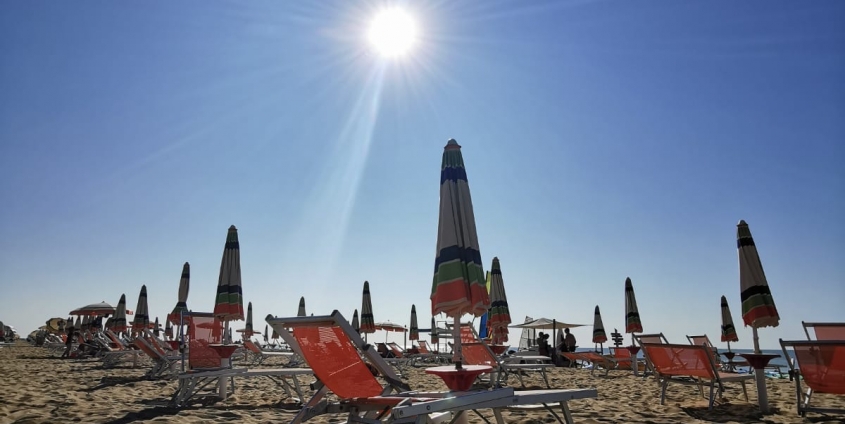Seaside resorts along the Italian Adriatic coast: Take a quick dip
It’s 203 kilometres from the University of Klagenfurt to the centre of Grado, a journey that can be made in just over two hours by car. With Klagenfurt as your starting point, it’s easy to take the day off and spend it relaxing on the beach. Once somewhat scorned as so-called caretaker beaches, the seaside resorts of the Upper Adriatic have enjoyed a resurgence in popularity over the past few summers. Find out about the most important locations here.
Grado:
Grado is located in Friuli-Venezia Giulia and is the first seaside resort once you pass Udine. To reach the town, which has a population of around 8,000, you follow a four-kilometre causeway. Grado is well equipped to welcome guests for the day: You can hire umbrellas and deckchairs virtually everywhere. The historic heart of the town with its winding alleys offers plenty of attractions for tourists, though it has a somewhat gentler atmosphere than Lignano or Jesolo in this regard. For day trips, including during the off-peak months, it’s worth taking a stroll along the promenade that connects Spaggia Principale, Costa Azzurra and Pineta beach. Grado is a little slow, just a touch sleepy, pleasantly quiet and old-fashioned in a classy way.
Lignano:
Lignano has a population of around 7,000 spread across the three districts of Sabbiadoro, Pineta and Riviera. In recent years, Lignano has evolved into a party location for young visitors. Especially around Whitsun, thousands of partylovers, most of them from Austria, flock to the beaches (and there’s always a few who display conduct that is unbecoming). Lignano’s modern pedestrian precinct extends through the entire town and features many lovely boutiques for the fashion-conscious. There are small bars on every section of the beach where you can enjoy a cool Aperol Sprizz and the latest summer hits. Nowadays, you will not find many ornate Italian flourishes in Lignano; instead, the design of the hotels and public spaces is straight, sleek and cool.
Caorle:
Located in Veneto, Caorle has a population of around 11,000 and boasts a typically Italian historical centre, where you can explore tiny piazzas and winding alleyways. One striking feature is the Campanile: 48 metres high and not entirely straight, it is also the town’s landmark. In recent summers, Caorle has seen the proliferation of a growing number of modern beach bars that are rather more reminiscent of Miami than of the retro charm of the Upper Adriatic. And yet, Caorle skillfully blends the historical with the modern. It’s unique appeal can be enjoyed particularly well around the fringes of the main tourist season.
Jesolo:
Jesolo is not for everyone: The town with its 26,000 inhabitants hosts around 5.6 million tourists each year. Most people only visit the “real town” of Jesolo, which is about 2 kilometres inland, to shop at the weekly market. People usually stick to the beaches in Lido di Jesolo. Beaches stretch as far as the eye can see along the 15 km length of the peninsula, with one colourful umbrella following the next for kilometre upon kilometre. The “second row” is lined with shops, restaurants, bars and the (in)famous high-decibel sali di giochi. Anyone who is keen on a full immersion in the Italian holiday experience should come to Jesolo around 15 August. It’s life at the max.










 Foto: KK
Foto: KK
